- Home
- Roald Dahl
Ah, Sweet Mystery of Life Page 3
Ah, Sweet Mystery of Life Read online
Page 3
But there was no hurry, he told himself. He would return here later. He had the whole afternoon before him.
The next farm was situated some way back in the fields, and in order to keep his car out of sight, Mr Boggis had to leave it on the road and walk about six hundred yards along a straight track that led directly into the back yard of the farmhouse. This place, he noticed as he approached, was a good deal smaller than the last, and he didn’t hold out much hope for it. It looked rambling and dirty, and some of the sheds were clearly in bad repair.
There were three men standing in a close group in a corner of the yard, and one of them had two large black greyhounds with him, on leashes. When the men
caught sight of Mr Boggis walking forward in his black suit and parson’s collar, they stopped talking and
seemed suddenly to stiffen and freeze, becoming absolutely still, motionless, three faces turned toward him, watching him suspiciously as he approached.
The oldest of the three was a stumpy man with a wide frog mouth and small shifty eyes, and although Mr Boggis didn’t know it, his name was Rummins and he was the owner of the farm.
The tall youth beside him, who appeared to have something wrong with one eye, was Bert, the son of Rummins.
The shortish flat-faced man with a narrow corrugated brow and immensely broad shoulders was Claud. Claud had dropped in on Rummins in the hope of getting a piece of pork or ham out of him from the pig that had been killed the day before. Claud knew about the killing – the noise of it had carried far across the fields – and he also knew that a man should have a government permit to do that sort of thing, and that Rummins didn’t have one.
‘Good afternoon,’ Mr Boggis said. ‘Isn’t it a lovely day.’
None of the three men moved. At that moment they were all thinking precisely the same thing – that somehow or other this clergyman, who was certainly not the local fellow, had been sent to poke his nose into their business and to report what he found to the government.
‘What beautiful dogs,’ Mr Boggis said. ‘I must say I’ve never been greyhound-racing myself, but they tell me it’s a fascinating sport.’
Again the silence, and Mr Boggis glanced quickly from Rummins to Bert, then to Claud, then back again to Rummins, and he noticed that each of them had the same peculiar expression on his face, something between a jeer and a challenge, with a contemptuous curl to the mouth, and a sneer around the nose.
‘Might I enquire if you are the owner?’ Mr Boggis asked, undaunted, addressing himself to Rummins.
‘What is it you want?’
‘I do apologise for troubling you, especially on a Sunday.’
Mr Boggis offered his card and Rummins took it and held it up close to his face. The other two didn’t move, but their eyes swivelled over to one side, trying to see.
‘And what exactly might you be wanting?’ Rummins asked.
For the second time that morning, Mr Boggis explained at some length the aims and ideals of the Society for the Preservation of Rare Furniture.
‘We don’t have any,’ Rummins told him when it was over. ‘You’re wasting your time.’
‘Now, just a minute, sir,’ Mr Boggis said, raising a finger. ‘The last man who said that to me was an old farmer down in Sussex, and when he finally let me into his house, d’you know what I found? A dirty-looking chair in the corner of the kitchen, and it turned out to be worth four hundred pounds! I showed him how to sell it, and he bought himself a new tractor with the money.’
‘What on earth are you talking about?’ Claud said. ‘There ain’t no chair in the world worth four hundred pounds.’
‘Excuse me,’ Mr Boggis answered primly, ‘but there are plenty of chairs in England worth more than twice that figure. And you know where they are? They’re tucked away in the farms and cottages all over the country, with the owners using them as steps and ladders and standing on them with hobnailed boots to reach a pot of jam out of the top cupboard or to hang a picture. This is the truth I’m telling you, my friends.’
Rummins shifted uneasily on his feet. ‘You mean to say all you want to do is go inside and stand there in the middle of the room and look around?’
‘Exactly,’ Mr Boggis said. He was at last beginning to sense what the trouble might be. ‘I don’t want to pry into your cupboards or into your larder. I just want to look at the furniture to see if you happen to have any treasures here, and then I can write about them in our Society magazine.’
‘You know what I think?’ Rummins said, fixing him with his small wicked eyes. ‘I think you’re after buying the stuff yourself. Why else would you be going to all this trouble?’
‘Oh, dear me. I only wish I had the money. Of course, if I saw something that I took a great fancy to, and it wasn’t beyond my means, I might be tempted to make an offer. But alas, that rarely happens.’
‘Well,’ Rummins said, ‘I don’t suppose there’s any harm in your taking a look around if that’s all you want.’ He led the way across the yard to the back door of the farmhouse, and Mr Boggis followed him; so did the son, Bert, and Claud with his two dogs. They went through the kitchen, where the only furniture was a cheap deal table and a dead chicken lying on it, and they emerged into a fairly large, exceedingly filthy living-room.
And there it was! Mr Boggis saw it at once, and he stopped dead in his tracks and gave a little shrill gasp of shock. Then he stood there for five, ten, fifteen seconds at least, staring like an idiot, unable to believe, not daring to believe what he saw before him. It couldn’t be true, not possibly! But the longer he stared, the more true it began to seem. After all, there it was standing against the wall right in front of him, as real and as solid as the house itself. And who in the world could possibly make a mistake about a thing like that? Admittedly it was painted white, but that made not the slightest difference. Some idiot had done that. The paint could easily be stripped off. But good God! Just look at it! And in a place like this!
At that point, Mr Boggis became aware of the three men, Rummins, Bert, and Claud, standing together in a group over by the fireplace, watching him intently. They had seen him stop and gasp and stare, and they must have seen his face turning red, or maybe it was white, but in any event they had seen enough to spoil the whole goddam business if he didn’t do something about it quick. In a flash, Mr Boggis clapped one hand over his heart, staggered to the nearest chair, and collapsed into it, breathing heavily.
‘What’s the matter with you?’ Claud asked.
‘It’s nothing,’ he gasped. ‘I’ll be all right in a minute. Please – a glass of water. It’s my heart.’
Bert fetched him the water, handed it to him, and stayed close beside him, staring down at him with a fatuous leer on his face.
‘I thought maybe you were looking at something,’ Rummins said. The wide frog-mouth widened a fraction further into a crafty grin, showing the stubs of several broken teeth.
‘No, no,’ Mr Boggis said. ‘Oh dear me, no. It’s just my heart. I’m so sorry. It happens every now and then. But it goes away quite quickly. I’ll be all right in a couple of minutes.’
He must have time to think, he told himself. More important still, he must have time to compose himself thoroughly before he said another word. Take it gently, Boggis. And whatever you do, keep calm. These people may be ignorant, but they are not stupid. They are suspicious and wary and sly. And if it is really true – no it can’t be, it can’t be true…
He was holding one hand up over his eyes in a gesture of pain, and now, very carefully, secretly, he made a little crack between two of the fingers and peeked through.
Sure enough, the thing was still there, and on this occasion he took a good long look at it. Yes – he had been right the first time! There wasn’t the slightest doubt about it! It was really unbelievable!
What he saw was a piece of furniture that any expert would have given almost anything to acquire. To a layman, it might not have appeared particularly impressive, especially when covered
over as it was with dirty white paint, but to Mr Boggis it was a dealer’s dream. He knew, as does every other dealer in Europe and America, that among the most celebrated and coveted examples of eighteenth-century English furniture in existence are the three famous pieces known as ‘The Chippendale Commodes’. He knew their history backwards – that the first was ‘discovered’ in 1920, in a house at Moreton-on-the-Marsh, and was sold at Sotheby’s the same year; that the other two turned up in the same auction rooms a year later, both coming out of Rainham Hall, Norfolk. They all fetched enormous prices. He couldn’t quite remember the exact figure for the first one, or even the second, but he knew for certain that the last one to be sold had fetched thirty-nine hundred guineas. And that was in 1921! Today the same piece would surely be worth ten thousand pounds. Some man, Mr Boggis couldn’t remember his name, had made a study of these commodes fairly recently and had proved that all three must have come from the same workshop, for the veneers were all from the same log, and the same set of templates had been used in the construction of each. No invoices had been found for any of them, but all the experts were agreed that these three commodes could have been executed only by Thomas Chippendale himself, with his own hands, at the most exalted period in his career.
And here, Mr Boggis kept telling himself as he peered cautiously through the crack in his fingers, here was the fourth Chippendale Commode! And he had found it! He would be rich! He would also be famous. Each of the other three was known throughout the furniture world by a special name – The Chastleton Commode, The First Rainham Commode, The Second Rainham Commode. This one would go down in history as The Boggis Commode! Just imagine the faces of the boys up there in London when they got a look at it tomorrow morning! And the luscious offers coming in from the big fellows over in the West End – Frank Partridge, Mallett, Jetley, and the rest of them! There would be a picture of it in The Times, and it would say, ‘The very fine Chippendale Commode which was recently discovered by Mr Cyril Boggis, a London dealer…’ Dear God, what a stir he was going to make!
This one here, Mr Boggis thought, was almost exactly similar to the Second Rainham Commode. (All three, the Chastleton and the two Rainhams, differed from one another in a number of small ways.) It was a most impressive handsome affair built in the French rococo style of Chippendale’s Director period, a kind of large fat chest of drawers set upon four carved and fluted legs that raised it about a foot from the ground. There were six drawers in all, two long ones in the middle and two shorter ones on either side. The serpentine front was magnificently ornamented along the top and sides and bottom, and also vertically between each set of drawers, with intricate carvings of festoons and scrolls and clusters. The brass handles, although partly obscured by white paint, appeared to be superb. It was, of course, a rather ‘heavy’ piece, but the design had been executed with such elegance and grace that the heaviness was in no way offensive.
‘How’re you feeling now?’ Mr Boggis heard someone saying.
‘Thank you, thank you, I’m much better already. It passes quickly. My doctor says it’s nothing to worry about really so long as I rest for a few minutes whenever it happens. Ah yes,’ he said, raising himself slowly to his feet. ‘That’s better. I’m all right now.’
A trifle unsteadily, he began to move around the room examining the furniture, one piece at a time, commenting upon it briefly. He could see at once that apart from the commode it was a very poor lot.
‘Nice oak table,’ he said. ‘But I’m afraid it’s not old enough to be of any interest. Good comfortable chairs, but quite modern, yes, quite modern. Now this cupboard, well, it’s rather attractive, but again, not valuable. This chest of drawers’ – he walked casually past the Chippendale Commode and gave it a little contemptuous flip with his fingers – ’worth a few pounds, I dare say, but no more. A rather crude reproduction, I’m afraid. Probably made in Victorian times. Did you paint it white?’
‘Yes,’ Rummins said. ‘Bert did it.’
‘A very wise move. It’s considerably less offensive in white.’
‘That’s a strong piece of furniture,’ Rummins said. ‘Some nice carving on it too.’
‘Machine-carved,’ Mr Bogg’s answered superbly, bending down to examine the exquisite craftsmanship. ‘You can tell it a mile off. But still, I suppose it’s quite pretty in its way. It has its points.’
He began to saunter off, then he checked himself and turned slowly back again. He placed the tip of one finger against the point of his chin, laid his head over to one side, and frowned as though deep in thought.
‘You know what?’ he said, looking at the commode, speaking so casually that his voice kept trailing off. ‘I’ve just remembered… I’ve been wanting a set of legs something like that for a long time. I’ve got a rather curious table in my own little home, one of those low things that people put in front of the sofa, sort of coffee table, and last Michaelmas, when I moved house, the foolish movers damaged the legs in the most shocking way. I’m very fond of that table. I always keep my big Bible on it, and all my sermon notes.’
He paused, stroking his chin with the finger. ‘Now I was just thinking. These legs on your chest of drawers might be very suitable. Yes, they might indeed. They could easily be cut off and fixed on to my table.’
He looked around and saw the three men standing absolutely still, watching him suspiciously, three pairs of eyes, all different but equally mistrusting, small pig eyes for Rummins, large slow eyes for Claud, and two odd eyes for Bert, one of them very queer and boiled and misty pale, with a little black dot in the centre, like a fish eye on a plate.
Mr Boggis smiled and shook his head. ‘Come, come, what on earth am I saying? I’m talking as though I owned the piece myself. I do apologise.’
‘What you mean to say is you’d like to buy it,’ Rummins said.
‘Well…’ Mr Boggis glanced back at the commode, frowning. ‘I’m not sure. I might… and then again… on second thoughts… no… I think it might be a bit too much trouble. It’s not worth it. I’d better leave it.’
‘How much were you thinking of offering?’ Rummins asked.
‘Not much, I’m afraid. You see, this is not a genuine antique. It’s merely a reproduction.’
‘I’m not so sure about that,’ Rummins told him. ‘It’s been in here over twenty years, and before that it was up at the Manor House. I bought it there myself at auction when the old Squire died. You can’t tell me that thing’s new’
‘It’s not exactly new, but it’s certainly not more than about sixty years old.’
‘It’s more than that,’ Rummins said. ‘Bert, where’s that bit of paper you once found at the back of one of them drawers? That old bill.’
The boy looked vacantly at his father.
Mr Boggis opened his mouth, then quickly shut it again without uttering a sound. He was beginning literally to shake with excitement, and to calm himself he walked over to the window and stared out at a plump brown hen pecking around for stray grains of corn in the yard.
‘It was in the back of that drawer underneath all them rabbit-snares,’ Rummins was saying. ‘Go on and fetch it out and show it to the parson.’
When Bert went forward to the commode, Mr Boggis turned round again. He couldn’t stand not watching him. He saw him pull out one of the big middle drawers, and he noticed the beautiful smooth way in which the drawer slid open. He saw Bert’s hand dipping inside and rummaging around among a lot of wires and strings.
‘You mean this?’ Bert lifted out a piece of folded yellowing paper and carried it over to the father, who unfolded it and held it up close to his face.
‘You can’t tell me this writing ain’t bloody old,’ Rummins said, and he held the paper out to Mr Boggis, whose whole arm was shaking as he took it. It was brittle and it crackled slightly between his fingers. The writing was in a long sloping copperplate hand:
Edward Montagu, Esq.
Dr.
To Thos. Chippendale
A larg
e mahogany Commode Table of exceeding fine wood, very rich carvd, set upon fluted legs, two very neat shapd long drawers in the middle part and two ditto on each side, with rich chasd Brass Handles and Ornaments, the whole compleatly finished in the most exquisite taste…. £87
Mr Boggis was holding on to himself tight and fighting to suppress the excitement that was spinning round inside him and making him dizzy. Oh God, it was wonderful! With the invoice, the value had climbed even higher. What in heaven’s name would it fetch now? Twelve thousand pounds? Fourteen? Maybe fifteen or even twenty? Who knows?
Oh, boy!
He tossed the paper contemptuously on to the table and said quietly, ‘It’s exactly what I told you, a Victorian reproduction. This is simply the invoice that the seller – the man who made it and passed it off as an antique – gave to his client. I’ve seen lots of them. You’ll notice that he doesn’t say he made it himself. That would give the game away.’
‘Say what you like,’ Rummins announced, ‘but that’s an old piece of paper.’
‘Of course it is, my dear friend. It’s Victorian, late Victorian. About 1890. Sixty or seventy years old. I’ve seen hundreds of them. That was a time when masses of cabinet-makers did nothing else but apply themselves to faking the fine furniture of the century before.’
‘Listen, Parson,’ Rummins said, pointing at him with a thick dirty finger, ‘I’m not saying as how you may not know a fair bit about this furniture business, but what I am saying is this: How on earth can you be so mighty sure it’s a fake when you haven’t even seen what it looks like underneath all that paint?’

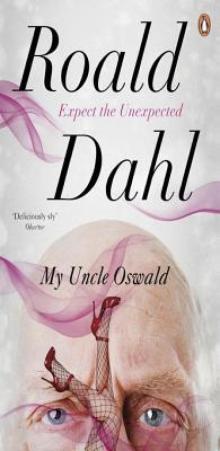 My Uncle Oswald
My Uncle Oswald The Best of Roald Dahl
The Best of Roald Dahl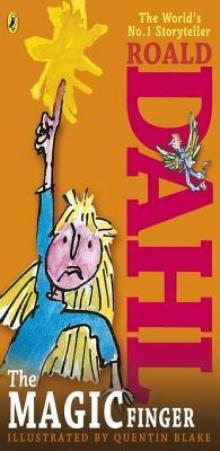 The Magic Finger
The Magic Finger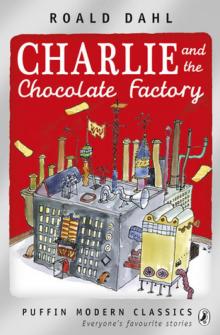 Charlie and the Chocolate Factory
Charlie and the Chocolate Factory Fantastic Mr Fox
Fantastic Mr Fox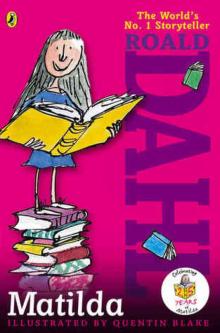 Matilda
Matilda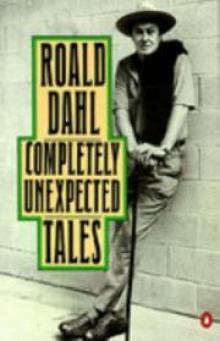 Completely Unexpected Tales: Tales of the Unexpected. More Tales of the Unexpected
Completely Unexpected Tales: Tales of the Unexpected. More Tales of the Unexpected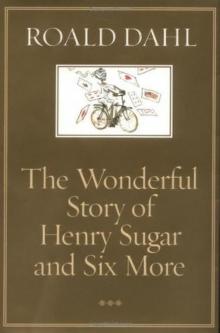 The Wonderful Story of Henry Sugar and Six More
The Wonderful Story of Henry Sugar and Six More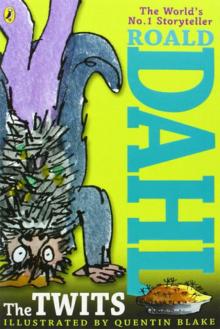 The Twits
The Twits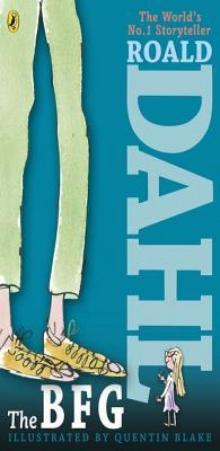 The BFG
The BFG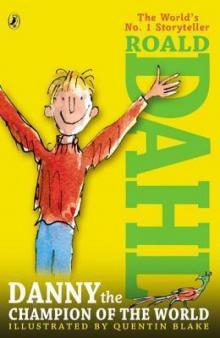 Danny the Champion of the World
Danny the Champion of the World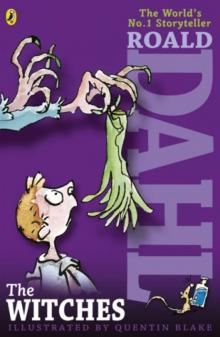 The Witches
The Witches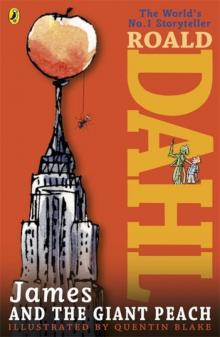 James and the Giant Peach
James and the Giant Peach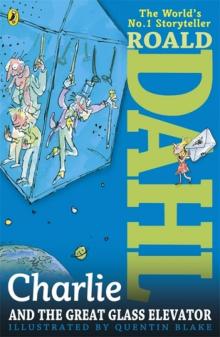 Charlie and the Great Glass Elevator
Charlie and the Great Glass Elevator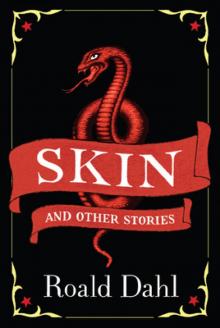 Skin and Other Stories
Skin and Other Stories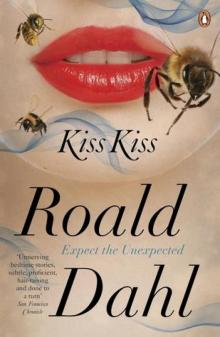 Kiss Kiss
Kiss Kiss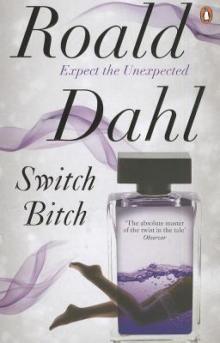 Switch Bitch
Switch Bitch The Giraffe and the Pelly and Me
The Giraffe and the Pelly and Me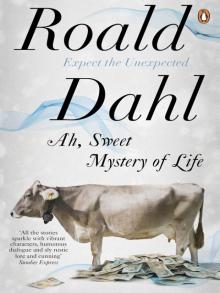 Ah, Sweet Mystery of Life
Ah, Sweet Mystery of Life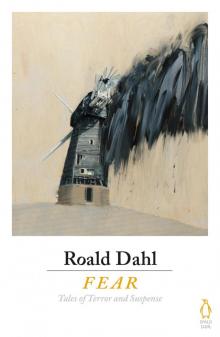 Fear
Fear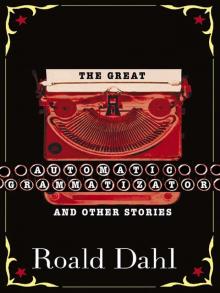 The Great Automatic Grammatizator and Other Stories
The Great Automatic Grammatizator and Other Stories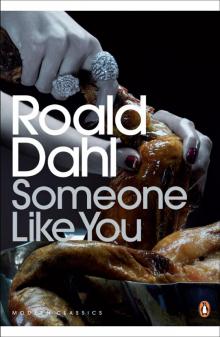 Someone Like You
Someone Like You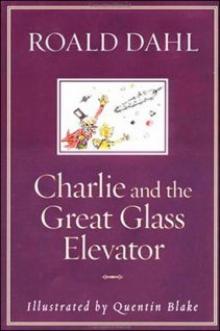 Charlie and the Great Glass Elevator c-2
Charlie and the Great Glass Elevator c-2 More About Boy
More About Boy Tales of the Unexpected
Tales of the Unexpected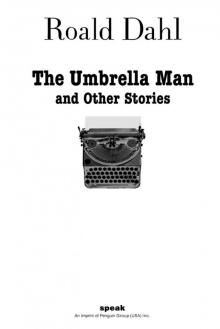 The Umbrella Man and Other Stories
The Umbrella Man and Other Stories Dirty Beasts
Dirty Beasts Roald Dahl's Mischief and Mayhem
Roald Dahl's Mischief and Mayhem The Collected Short Stories of Roald Dahl, Volume 1
The Collected Short Stories of Roald Dahl, Volume 1 The Missing Golden Ticket and Other Splendiferous Secrets
The Missing Golden Ticket and Other Splendiferous Secrets Billy and the Minpins
Billy and the Minpins Over to You
Over to You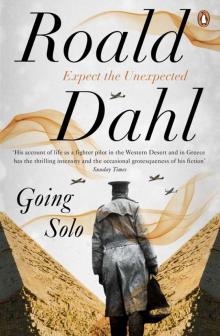 Going Solo
Going Solo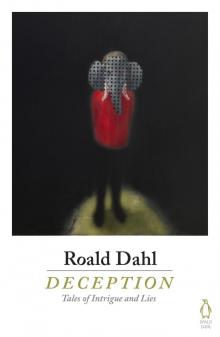 Deception
Deception War
War Man from the South ee-3
Man from the South ee-3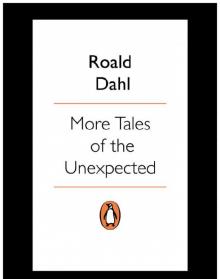 More Tales of the Unexpected
More Tales of the Unexpected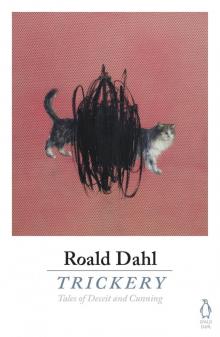 Trickery
Trickery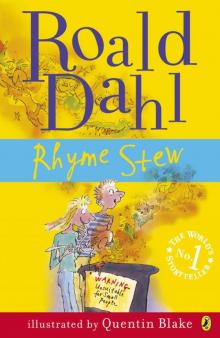 Rhyme Stew
Rhyme Stew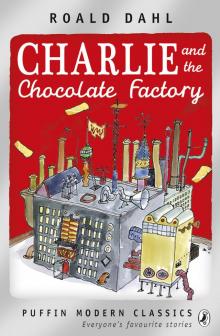 Charlie and the Chocolate Factory (Puffin Modern Classics relaunch)
Charlie and the Chocolate Factory (Puffin Modern Classics relaunch)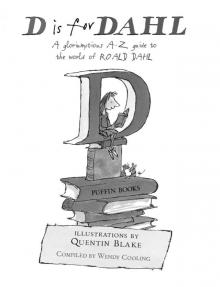 D is for Dahl
D is for Dahl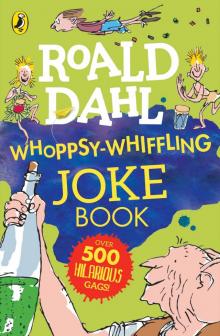 Roald Dahl Whoppsy-Whiffling Joke Book
Roald Dahl Whoppsy-Whiffling Joke Book Spotty Powder and other Splendiferous Secrets
Spotty Powder and other Splendiferous Secrets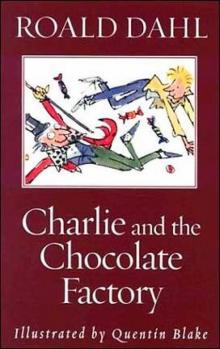 Charlie and the Chocolate Factory c-1
Charlie and the Chocolate Factory c-1 Boy
Boy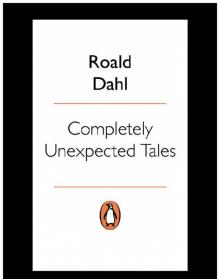 Completely Unexpected Tales
Completely Unexpected Tales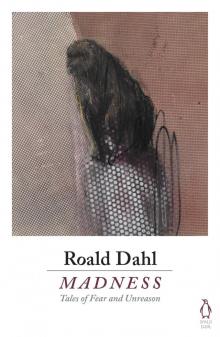 Madness
Madness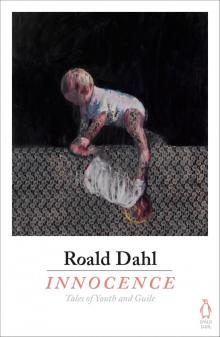 Innocence
Innocence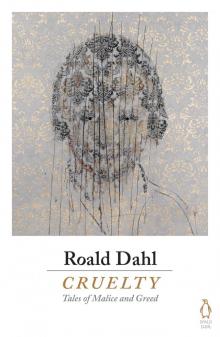 Cruelty
Cruelty George's Marvellous Medicine
George's Marvellous Medicine